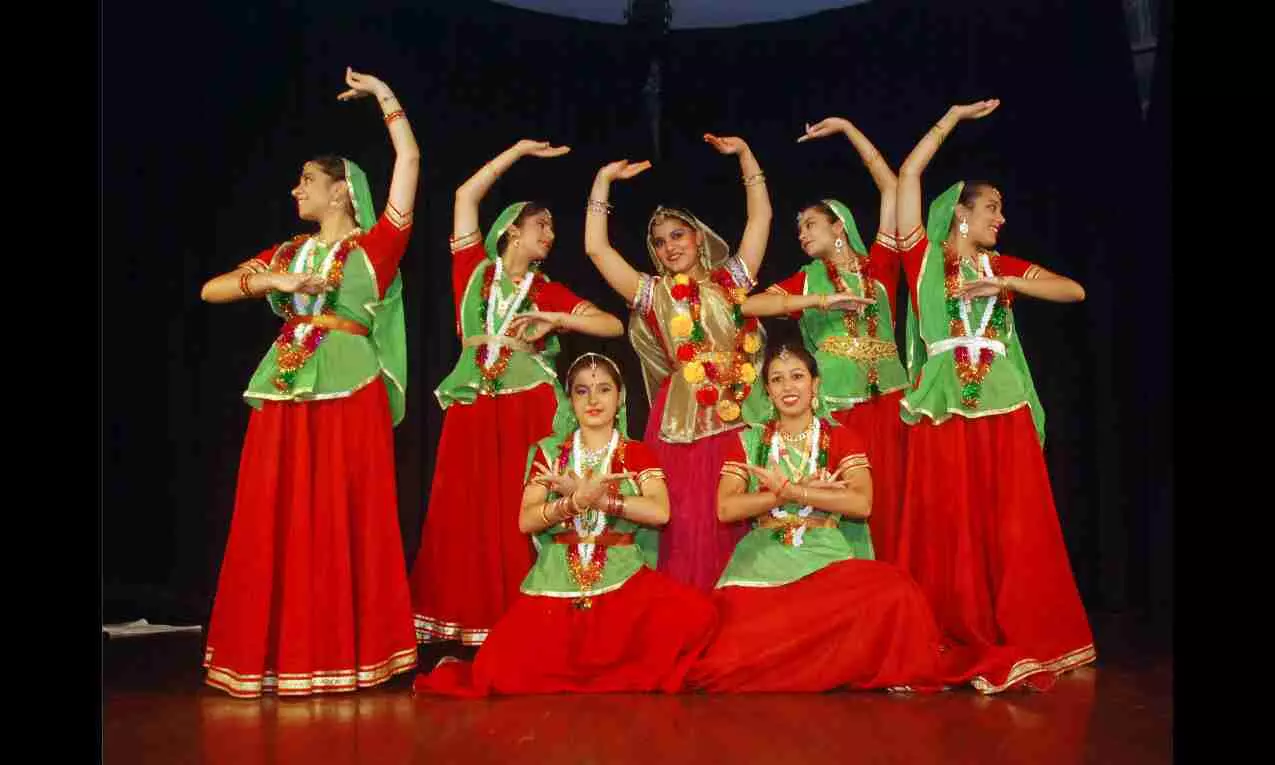Kathak Ki Kahani: Embracing the ancient dance legacy

In collaboration with ‘Azadi ka Amrit Mahotsava’, Uma Sharma and ‘Bhartiya Sangeet Sadan’ have organised ‘Kathak Ki Kahani: Kathak Through Ages’, a dance performance in which students from ‘Dance Bhartiya Sangeet Sadan’ will showcase the art of Kathak dance. They will beautifully portray stories through their dance movements. The renowned Kathak exponent, Uma Sharma, will also grace the stage and present a mesmerising Kathak ‘nritya abhinav’ performance. The program will take place today from 7 pm onwards at the India Islamic Cultural Centre, Lodhi Road.
“As a senior dancer, I believe it’s crucial for the public to truly understand the essence of Kathak dance. Today, we witness a gradual decline in the number of Kathak artists. It’s disheartening to see this beautiful art form losing its prominence. Kathak is not merely a dance. It’s a gateway to our rich cultural heritage and a mesmerising blend of rhythm, grace and storytelling. Let us embrace and appreciate the magnificence of Kathak and preserve its legacy for generations to come. Together, we can revive its splendour and ensure that this timeless art form continues to enchant and inspire all who witness its magic.”
Kathak dance had its birth in the temples of Ayodhya and Vrindavan in the form of ‘Raas Leela’, where it was used as pantomime to accompany the recitation of the Kathaks (‘Katha Vachak’), the professional storytellers who recounted and interpreted tales from Hindu mythology such as ‘Shreemad Bhagavad Gita’ and ‘Ramayan’. It soon involved dance and song as these rhapsodists reached the point of ecstasy in their devotion. Then it became a full-fledged hereditary art.
Kathak was then introduced as a form of entertainment in the courts of the Hindu kings and became a secular art. It was during this period that it began its development as a distinct and individualistic style. In a great period of renaissance in India, the cult of Krishna was at its height. A major part of the interpretive themes centred around Radha Krishna (symbolic of the urge of the soul for the universal divine soul).
The curtain next rose on the Mughal period, which brought, with the invaders, a new culture from Persia and a new sort of court life. The Mughal emperors appropriated Kathak dance and introduced it into their courts and the dancers they imported from Persia and elsewhere, were influenced by Kathak and, in turn, influenced it.
Today’s Kathak goes to modern stage and technique with lightning, sets and ‘nritya natika’, solo, duet and group dances of ‘Bhakti-Ras’ and ‘Shringar-Ras’, where Mughal era and Hinduism come together and everybody dances together.
Kathak depicts life. The three phases of creation, preservation and destruction - ‘Brahma-Vishnu-Mahesh’ - are clearly reflected through this medium. The event will end with ‘Vijayi Vishwa Tiranga Pyara, Jhanda Uncha Rahe Hamara’ by dancers.



